Home » Posts tagged 'fossil fuels' (Page 20)
Tag Archives: fossil fuels
Visualizing How Much Oil Is In An Electric Vehicle?
Visualizing How Much Oil Is In An Electric Vehicle?
When most people think about oil and natural gas, the first thing that comes to mind is the gas in the tank of their car. But, as Visual Capitalist’s Nicholas LePan notes, there is actually much more to oil’s role, than meets the eye…
Oil, along with natural gas, has hundreds of different uses in a modern vehicle through petrochemicals.
Today’s infographic comes to us from American Fuel & Petrochemicals Manufacturers, and covers why oil is a critical material in making the EV revolution possible.

Canada’s Cars Are World’s Worst Gas Guzzlers, but BC May Be Tipping Point
Canada’s Cars Are World’s Worst Gas Guzzlers, but BC May Be Tipping Point
Surge in electric vehicle sales a silver lining to high pump prices.

[Editor’s note: Accelerating gasoline prices in B.C. have triggered an investigationby the B.C. Utilities Commission and are helping to fuel a boom in electric vehicle sales in the province. Refining more crude locally might eventually cause gasoline prices to drop but that would take years and a major investment, says one analyst. “I can’t see anybody wanting to invest at least a billion [dollars] for a new refinery in British Columbia because you’ve got electric vehicles coming over the hill. They’re in the market, they’re available, and they are a viable alternative to gasoline powered cars.”
Is that a tipping point we hear? The Tyee’s Geoff Dembicki predicted in December that might happen. Earlier this month, University of Calgary professor Blake Shaffer revealed Canadian cars are the world’s top gas guzzlers, but B.C.’s carbon tax along with provincial and federal electric-car-friendly policies are mapping the road to redemption. Given trends at the pump and in the atmosphere, Shaffer’s findings are more relevant daily.]
Usually when Canada is at the top of an international ranking, it’s cause for celebration. Not this time.
A recent report by the International Energy Agency shows that Canada’s vehicles have the highest average fuel consumption and carbon dioxide emissions per kilometre driven. They are also the largest and the second heaviest in the world.
In short: Canadian vehicles are big, heavy and guzzle a lot of gasoline. For a country that is championing its climate action, how do we square these facts?
…click on the above link to read the rest of the article…
45 Reasons why wind power can not replace fossil fuels
45 Reasons why wind power can not replace fossil fuels

Source: Leonard, T. 2012. Broken down and rusting, is this the future of Britain’s ‘wind rush’? https://www.dailymail.co.uk/news/article-2116877/Is-future-Britains-wind-rush.html
Preface. Electricity simply doesn’t substitute for all the uses of fossil fuels, so windmills will never be able to reproduce themselves from the energy they generate — they are simply not sustainable. Consider the life cycle of a wind turbine – giant diesel powered mining trucks and machines dig deep into the earth for iron ore, fossil-fueled ships take the ore to a facility that will use fossil fuels to crush it and permeate it with toxic petro-chemicals to extract the metal from the ore. Then the metal will be taken in a diesel truck or locomotive to a smelter which runs exclusively on fossil fuels 24 x 7 x 365 for up to 22 years (any stoppage causes the lining to shatter so intermittent electricity won’t do). There are over 8,000 parts to a wind turbine which are delivered over global supply chains via petroleum-fueled ships, rail, air, and trucks to the assembly factory. Finally diesel cement trucks arrive at the wind turbine site to pour many tons of concrete and other diesel trucks carry segments of the wind turbine to the site and workers who drove gas or diesel vehicles to the site assemble it.
Here are the topics covered below in this long post:
- Windmills require petroleum every single step of their life cycle. If they can’t replicate themselves using wind turbine generated electricity, they are not sustainable
- SCALE. Too many windmills needed to replace fossil fuels
- SCALE. Wind turbines can’t be scaled up fast enough to replace fossils
- Not enough rare earth metals and enormous amounts of cement, steel, and other materials required
- Not enough dispatchable power to balance wind intermittency and unreliability
- Wind blows seasonally, so for much of there year there wouldn’t be enough wind
…click on the above link to read the rest of the article…
The bioenergy delusion
The bioenergy delusion
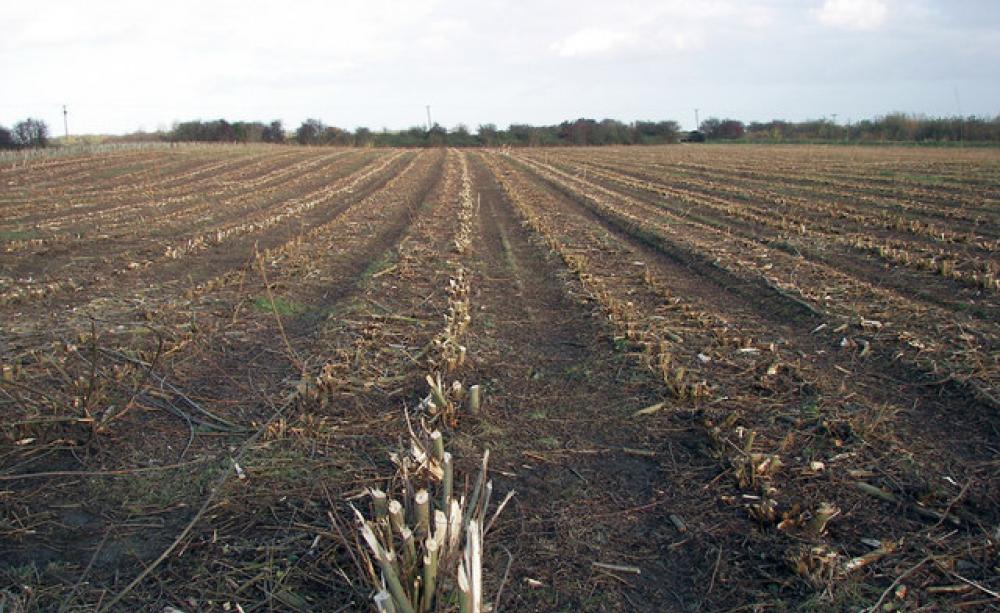
Replacing fossil fuels with bioenergy only takes us backwards, continuing our addiction to burning and extraction, and causing extensive ecological damage.
The bioenergy industry gives the impression of being at the forefront of tackling climate change. Every wood pellet that’s burned communicates the illusion of innovative progress away from fossil fuels and towards ‘renewable’ energy.
In the context of our urgent need to reduce greenhouse gas emissions, it is easy to be persuaded by a strategy which can supposedly help steer us away from impending doom.
Before I took my job working to protect forests I was under the impression that bioenergy was something positive.
Capitalism growth
Since humans first discovered how to create fire about 1.5 million years ago, our ability to harness the flames has sustained us, warmed us, and fed us.
Most of the world is fiercely globalised and intensely capitalist, focusing on – or subjected to – short-term economic gain.
Societies in the global north have become demanding and consumerist, reaching ever further afield for products to satisfy our desires. We have plunged deep into oil wells, and exploited pristine, ecologically priceless ecosystems in the Arctic and Amazon.
Burning materials to produce energy continues to drive our modern society.
Many people will have heard and agree with the slogan ‘keep it in the ground’ in reference to coal, oil and gas. The need to do so could not be more pressing, as we teeter on the brink of global climate catastrophe.
Climate denial
A crisis is already playing out around us – more noticeably in some parts of the world than in others, and exerting greater pressure and injustice on certain communities than on others.
…click on the above link to read the rest of the article…
Renewables Are Dead
Renewables Are Dead

If I’ve said once that those among us who tout renewable energy should pay more attention to the 2nd law of Thermodynamics, I must have said it a hundred times. But I hardly ever get the impression that people understand why. And it seems so obvious. A quote I often use from Herman Daly and Ken Townsend, when I talk about energy, really says it all:
“Erwin Schrodinger (1945) has described life as a system in steady-state thermodynamic disequilibrium that maintains its constant distance from equilibrium (death) by feeding on low entropy from its environment – that is, by exchanging high-entropy outputs for low-entropy inputs. The same statement would hold verbatium as a physical description of our economic process. A corollary of this statement is that an organism cannot live in a medium of its own waste products.”
Using energy produces waste. Using more energy produces more waste. It doesn’t matter -much- what kind of energy is used, or what kind of waste is produced. The energy WE use produces waste, in a medium of which WE cannot survive. The only way to escape this is to use less energy. And because we have used such an enormous amount of energy the past 100 years, we must use a whole lot less in the next 100.
We use about 100 times more energy per person, and a whole lot more in the west, than our own labor can produce. We use the equivalent of what 500 billion people can produce without the aid of fossil fuel-powered machines. We won’t solve this problem with wind turbines or solar panels. There really is one way only: cut down on energy use.
…click on the above link to read the rest of the article…
UK climate emergency is official policy
UK climate emergency is official policy

Heathrow’s expansion is now in question. Image: By J Patrick Fischer, via Wikimedia Commons
Major changes in the government’s policy on fossil fuels will be vital to tackling the UK climate emergency that Parliament has recognised.
LONDON, 3 May, 2019 − The United Kingdom has taken a potentially momentous policy decision: it says there is a UK climate emergency.
On 1 May British members of Parliament (MPs) became the world’s first national legislature to declare a formal climate and environment emergency, saying they hoped they could work with like-minded countries across the world to take action to avoid more than 1.5°C of global warming.
No-one yet knows what will be the practical result of the resolution proposed by Jeremy Corbyn, the Opposition Labour leader, but UK politicians were under pressure to act following a series of high-profile strikes by school students in recent months and demonstrations by a new climate protest organisation, Extinction Rebellion (XR), whose supporters closed roads in the centre of London for a week.
The Conservative government ordered its MPs not to oppose the Labour resolution, and it was passed without a vote.
Zero carbon by 2050
Hours after the MPs’ decision, a long-awaited detailed report by the government’s official advisors, the Committee on Climate Change, was published. It recommends cutting the UK’s greenhouse gas emissions to net zero by 2050. The current target is 80%.
The report says the government should accept the new target immediately, pass it into law in the next few months and begin to implement policies to achieve it. The committee says that will mean the end of petrol and diesel cars on British roads, a cut in meat consumption, an end to gas boilers for heating buildings, planting 1.5 billion trees to store carbon, a vast increase in renewable energy, and many other measures.
…click on the above link to read the rest of the article…
Glaciers’ global melt may leave Alps bare
Glaciers’ global melt may leave Alps bare

Across much of the world, the ice is trickling off the peaks. Image: By Raul Taciu on Unsplash
High mountain ice is vital to millions. As the world warms, the glaciers’ global melt could see the frozen peaks vanish.
LONDON, 12 April, 2019 – Many of the planet’s most scenic – and most valued – high-altitude landscapes are likely to look quite different within the next 80 years: the glaciers’ global melt will have left just bare rock.
By the century’s end, Europe’s famous Alps – the chain of snow- and ice-covered peaks that have become a playground of the wealthy and a source of income and pleasure for generations – will have lost more than nine-tenths of all its glacier ice.
And in the last 50 years, the world’s glaciers – in Asia, the Americas, Europe, Africa and the sub-Arctic mountains – have lost more than nine trillion tonnes of ice as global temperatures creep ever upwards in response to profligate combustion of fossil fuels.
And as meltwater has trickled down the mountains, the seas have risen by 27mm, thanks entirely to glacial retreat.
“Present mass-loss rates indicate that glaciers could almost disappear in some mountain ranges in this century”
In two separate studies, Swiss scientists have tried to audit a profit and loss account for the world’s frozen high-altitude rivers, and found a steady downhill trend.
Glacial ice is a source of security and even wealth: in the poorest regions the annual summer melt of winter snow and ice banked at altitude can guarantee both energy as hydropower and water for crops in the valleys and floodplains.
In wealthy regions, the white peaks and slopes become sources of income as tourist attractions and centres for winter sport – as well as reliable sources of power and water.
Swiss focus
…click on the above link to read the rest of the article…
The true feasibility of moving away from fossil fuels
The true feasibility of moving away from fossil fuels
One of the great misconceptions of our time is the belief that we can move away from fossil fuels if we make suitable choices on fuels. In one view, we can make the transition to a low-energy economy powered by wind, water, and solar. In other versions, we might include some other energy sources, such as biofuels or nuclear, but the story is not very different.
The problem is the same regardless of what lower bound a person chooses: our economy is way too dependent on consuming an amount of energy that grows with each added human participant in the economy. This added energy is necessary because each person needs food, transportation, housing, and clothing, all of which are dependent upon energy consumption. The economy operates under the laws of physics, and history shows disturbing outcomes if energy consumption per capita declines.
There are a number of issues:
- The impact of alternative energy sources is smaller than commonly believed.
- When countries have reduced their energy consumption per capita by significant amounts, the results have been very unsatisfactory.
- Energy consumption plays a bigger role in our lives than most of us imagine.
- It seems likely that fossil fuels will leave us before we can leave them.
- The timing of when fossil fuels will leave us seems to depend on when central banks lose their ability to stimulate the economy through lower interest rates.
- If fossil fuels leave us, the result could be the collapse of financial systems and governments.
[1] Wind, water and solar provide only a small share of energy consumption today; any transition to the use of renewables alone would have huge repercussions.
According to BP 2018 Statistical Review of World Energy data, wind, water and solar only accounted for 9.4% 0f total energy consumption in 2017.
…click on the above link to read the rest of the article…
Why All the Uproar Over the Green New Deal?
Why All the Uproar Over the Green New Deal?

Pulp mill, Longview, Washington. Photo: Jeffrey St. Clair.
Same ol’ same ol’ battle: The more things change, the more they stay the same
On August 21, 2009, The Wall Street Journal reported that “…many scientists say deep emissions cuts are necessary … to prevent … dangerous consequences of global warming,” and also reported that, “Getting from here to there would require a massive economic shift.”
There’s likely been no better summary of the Green New Deal’s basic rationale.
In just a few words, the Journal succinctly stated a dangerous trend of rising emissions from the combustion of fossil fuels, identified the scale of action necessary to putting a lid on the danger, and did that 10 years before the Sunrise Movement caught the attention of newly elected Representative Alexandria Ocasio-Cortez.
The details on either the science or economic side of the responses to the Green New Deal can be dazzling, and we’ve seen a virtual explosion of debate across topics that will be discussed in the following pages.
But, then as now, the heart of the massive economic shift deemed necessary by the evidence from science is a shift away from financing fossil fuels, with an accompanying shift to financing of renewables. Any such shift of “massive” scale was always going to rock some politically influential boats, so an offensive aimed at defeating it was revved up full bore. At bottom, it has long been and still is a competitive scramble for money.
Before the Green New Deal: The Old Battle Informs the New
In fact, an attack against renewables was kicked into gear years ago, and the current anti-Green New Deal brouhaha is just a rehash of an old campaign to defend the capital and capitalists aligned around combustion of coal, oil, and natural gas.
…click on the above link to read the rest of the article…
How Citizens Can Stop the Big Five’s Disastrous Fossil Fuel Funding
How Citizens Can Stop the Big Five’s Disastrous Fossil Fuel Funding
Canada’s major banks have financed $464 billion worth of fossil fuel projects since 2016.
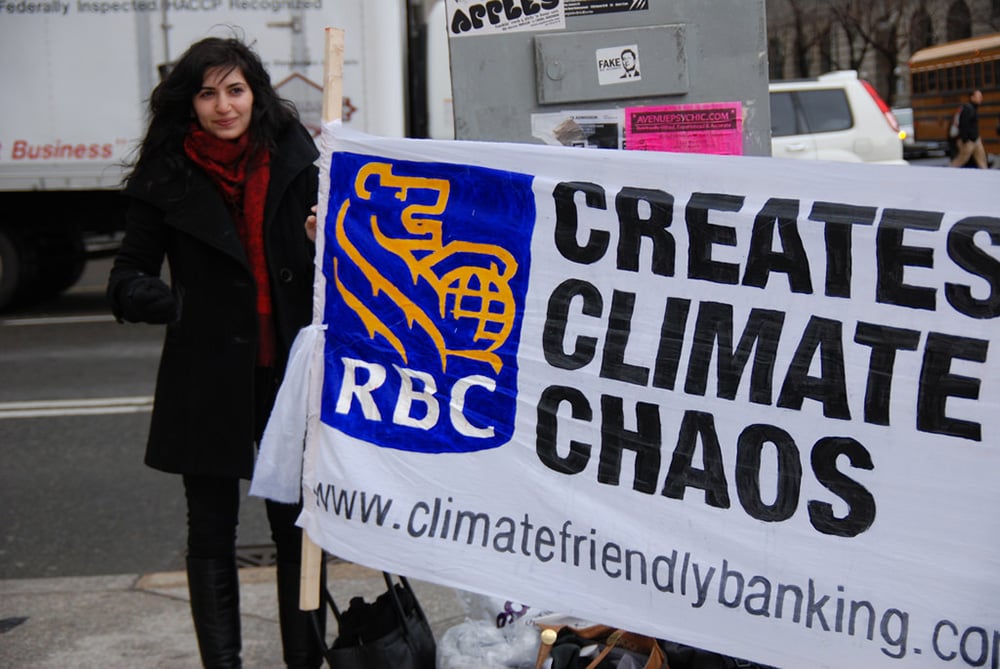
My first bank account was with RBC, back when they were still into being called “Royal.” I didn’t so much as choose them as just follow my parents, like you do with the family toothpaste brand.
Today it turns out that RBC is doing more to undermine my son’s future than any bank in Canada.
I’ve long since switched to a credit union. I couldn’t stand the predatory profits Canada’s five big banks rack up each year, or that they pay their executives such exorbitant amounts of money — in 2018 the five CEOs took home $62 million between them. All while dinging their customers for service fees every chance they get.
But if you are a young person getting your first account you have another reason to dislike the big banks. They are not just betting against your future; they are actively working to make it worse.
A new international report Banking on Climate Change finds in the three years since the Paris Agreement was adopted, Canada’s big five banks have financed a staggering $454 billion worth of fossil fuel projects, with RBC leading the pack. This includes $160 billion of financing for the expansion of new fossil fuels both in Canada and around the world.
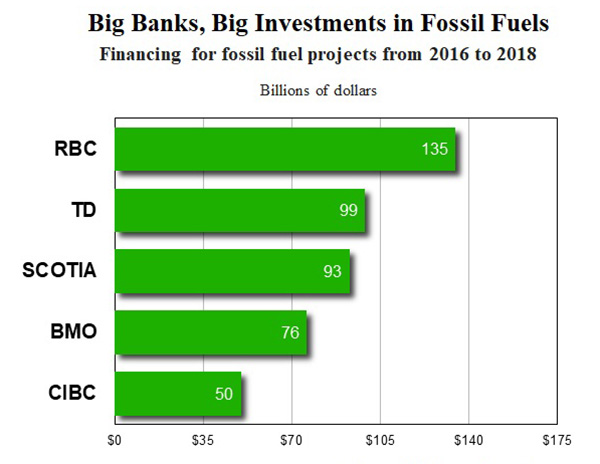
Scientists have told us we have less than 12 years to cut emissions almost in half, representing a dramatic reduction in fossil fuel use, to limit global warming to 1.5 degrees Celsius.
…click on the above link to read the rest of the article…
Oil Industry Ponders Getting ‘Dragged into Low-Carbon Future’ While Claiming it ‘Stepped up’ on Climate
Oil Industry Ponders Getting ‘Dragged into Low-Carbon Future’ While Claiming it ‘Stepped up’ on Climate

The fossil fuel industry’s faith that the modern world economy will be powered by its products for the indefinite future is usually unwavering. But cracks in that faith recently appeared in Houston at the top annual oil industry conference, known as CERAweek.
The trade publication Platts S&P Global noted that “talk of oil at CERAWeek felt a bit more lackluster this time around,” according to several attendees. Various pressures — from climate-anxious investors to competition from renewables — apparently are tempering the oil and gas industry’s usual optimism.
Perhaps also contributing to the mood was Norway’s announcement, just a day before the conference began, that its sovereign wealth fund was divesting from over 100 oil and gas exploration companies around the world. This news led to headlines like “World’s largest sovereign wealth fund to scrap oil and gas stocks.” Its fund managers were clear this decision wasn’t out of concern for the climate, but instead to make sure they didn’t lose money on risky oil and gas investments.
Only a few years ago, however, CERAweek was brimming with industry bravado, in which oil company CEOs mocked renewable energy sources and made claims that the oil industry just wanted to lift poor people out of poverty.
At the 2014 conference, attendees even heard Gina McCarthy — the Obama-appointed head of the Environmental Protection Agency at the time — promise that “[c]onventional fuels like coal and natural gas are going to play a critical role in a diverse energy mix for years to come.”
Oil and Gas ‘Crisis of Confidence’
…click on the above link to read the rest of the article…
The Future is Rural: Food System Adaptations to the Great Simplification
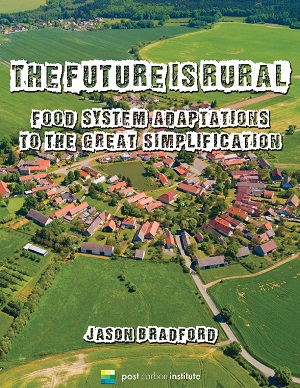
The Future is Rural: Food System Adaptations to the Great Simplification
The Future is Rural challenges the conventional wisdom about the future of food in our modern, globalized world. It is a much-needed reality check that explains why certain trends we take for granted–like the decline of rural areas and the dependence of farming and the food system on fossil fuels–are historical anomalies that will reverse over the coming decades. Renewable sources of energy must replace fossil fuels, but they will not power economies at the same scale as today. Priorities will profoundly shift, and food will become a central concern. Lessons learned from resilience science and alternatives to industrial agriculture provide a foundation for people to transition to more rural and locally focused lives.
Jason Bradford, a biologist and farmer, offers a deeply researched report on the future of food that reveals key blind spots in conventional wisdom on energy, technology, and demographics. The Future Is Rural presents Bradford’s analysis from his career in ecology and agriculture, as well as a synthesis of the historical and scientific underpinnings of the astonishing changes that will transform the food system and society as a whole.
‘A Red Screaming Alarm Bell’ to Banish Fossil Fuels: NASA Confirms Last Five Years Hottest on Record
‘A Red Screaming Alarm Bell’ to Banish Fossil Fuels: NASA Confirms Last Five Years Hottest on Record
“We’re no longer talking about a situation where global warming is something in the future. It’s here. It’s now.”

More than a million acres of land in California were swallowed up by devastating wildfires in 2018, which NASA reported on Tuesday was the fourth-hottest year on record. (Photo: AP)
NASA scientists confirmed in a report Wednesday that 2018 was one of the hottest years on record, continuing what the New York Times called “an unmistakable warming trend.”
Last year was the fourth-warmest on record since scientists began recording such data 140 years ago, according to NASA’s Goddard Institute for Space Studies (GISS). This finding makes the last five years the five hottest years ever, scientists said, slapping down any question that the planet is growing warmer.
“2018 is yet again an extremely warm year on top of a long-term global warming trend,” said GISS director Gavin Schmidt in a statement.
“The five warmest years have, in fact, been the last five years,” he told the Times. “We’re no longer talking about a situation where global warming is something in the future. It’s here. It’s now.”
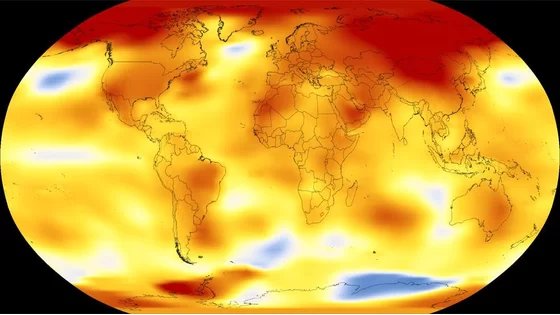

https://amp.space.com/43243-nasa-earth-climate-2018-temperatures-webcast.html … #NASA, #NOAA to Release Update on Earth’s Climate 2018 Global Temperatures Today… THIS is The State of Our Planet. Much more important than the dog and pony show of the #SOTU. #ClimateChange #Earth
…click on the above link to read the rest of the article…
Could a Green New Deal Save Civilization?
Could a Green New Deal Save Civilization?
To fully and systematically address the climate/energy crisis, the plan will have to be far broader in scope than what is currently being proposed. And while we need to mobilize society as a whole with a World War II-level of effort, the reality is that there’s never been a challenge like this before.

(Image: Michael Duffy)
The idea is infectious. Could a big government jobs and spending program succeed in kicking into gear the transition from fossil fuels to renewable energy, and ultimately save us from catastrophic climate change? The energy transition is currently going way too slowly; it needs money and policy support. And many people would need job retraining in order to work in re-engineered, renewable-powered industrial systems. In the 1930s, the New Deal programs of Franklin Roosevelt helped create jobs while also building critical infrastructure, including rural electrification, roads, bridges, and government buildings. Today, as we confront the requirements to produce energy sustainably; to use it differently in transportation, manufacturing, and agriculture; and to reverse the current trend toward increasing economic inequality—in effect, to save and reinvent industrial civilization—the need is arguably much greater.
The public champions of the Green New Deal (GND) in the U.S. include Democratic progressive representatives Alexandria Ocasio-Cortez, Deb Haaland, Rashida Tlaib, Ilhan Omar, and Antonio Delgado. The idea is also supported by writer-activists Naomi Klein and Van Jones; by the Green Parties in the US and Europe; and by the Sierra Club, 350.org, Greenpeace, Friends of the Earth, and the Climate Mobilization. The proposals currently circulating in Washington aim to provide 100 percent renewable energy in 10 to 20 years while supporting job retraining and aiding communities impacted by climate change. Some proposals also include a carbon tax (often with a fee-and-dividend structure that would rebate funds to low-income people so they could afford more costly energy services), incentives for green investment, public banks, measures to re-regulate the financial system, and the first steps toward a global Marshall Plan.
…click on the above link to read the rest of the article…





